Potrebujeme váš súhlas na využitie jednotlivých dát, aby sa vám okrem iného mohli ukazovať informácie týkajúce sa vašich záujmov. Súhlas udelíte kliknutím na tlačidlo „OK“.
ASTM E1930/E1930M-12
Standard Practice for Examination of Liquid-Filled Atmospheric and Low-Pressure Metal Storage Tanks Using Acoustic Emission
Automaticky preložený názov:
Štandardná prax pre vyšetrenie, ktoré obsahujú kvapalinu Atmosférické a nízkotlakový kovové skladovacie nádrže s využitím akustickej emisie
NORMA vydaná dňa 15.6.2012
Informácie o norme:
Označenie normy: ASTM E1930/E1930M-12
Poznámka: NEPLATNÁ
Dátum vydania normy: 15.6.2012
Kód tovaru: NS-43634
Počet strán: 12
Približná hmotnosť: 36 g (0.08 libier)
Krajina: Americká technická norma
Kategória: Technické normy ASTM
Kategórie - podobné normy:
Anotácia textu normy ASTM E1930/E1930M-12 :
Keywords:
acoustic emission, metal storage tanks, above ground storage tanks, ICS Number Code 23.020.10 (Stationary containers and tanks)
Doplňujúce informácie
| Significance and Use | ||||||||||||||||
|
General—This procedure is used for evaluation of the structural integrity of atmospheric storage tanks. The AE method can detect flaws which are in locations that are stressed during pressurization. Such locations include the tank wall, welds attaching pads to the tank, nozzle attachments, and welds attaching circumferential stiffeners to the tank. Among the potential sources of acoustic emission are: In both parent metal and weld associated regions: Cracks, The effect of corrosion, including cracking of corrosion products or local yielding, Stress corrosion cracking, Certain physical changes, including yielding and dislocations, Embrittlement, and Pits and gouges. In weld associated regions: Incomplete fusion, Lack of penetration, Undercuts, and Voids and porosity. Inclusions: Contamination. In parent metal: Laminations. In brittle linings: Cracks, Chips, and Inclusions. Note 1—Not all of these sources are typically encountered in field examination, some are detected under laboratory conditions. Accuracy of the results from this practice can be influenced by factors related to setup and calibration of instrumentation, background noise, material properties and characteristics of an examined structure. The outcome of this practice is to determine if the tank is suitable for service or if follow-up NDT is needed before that determination can be made. Unstressed Areas—Flaws in unstressed areas and passive flaws (those that are structurally insignificant under the applied load) will not generate AE. Such locations can include the roof and certain welds associated with platforms, ladders, and stairways. Passive Flaws (in Stressed Areas)—Some flaws in stressed areas might not generate acoustic emission during stressing. This usually means that the flaw has a higher stress tolerance than the examination stress. Filling—Filling proceeds at rates which minimize AE activity caused by fluid flow and which allow vessel deformation to be in equilibrium with applied load. Hold periods are used throughout the filling schedule to evaluate AE activity produced by the loaded structure in the absence of fill noise. Follow-up—Sources detected by AE should be examined using other NDT methods. Background Noise—Excess background noise may distort AE data or render them useless. Users must be aware of common sources of background noise: high fill rate (measurable flow noise), mechanical contact (impact, friction, fretting) with the tank by objects, electromagnetic interference (EMI) (motors, welders, overhead cranes) and radio frequency interference (RFI) (broadcasting facilities, walkie talkies), leaks at pipe or hose connections, leaks in the tank bottom or walls, airborne particles, insects, or rain drops, heaters, spargers, agitators, level detectors and other components inside the tank, chemical reactions occurring inside the tank, and hydrodynamic movement of gas bubbles. This practice should not be used if background noise cannot be eliminated or controlled. |
||||||||||||||||
| 1. Scope | ||||||||||||||||
|
1.1 This practice covers guidelines for acoustic emission (AE) examinations of new and in-service aboveground storage tanks of the type used for storage of liquids. 1.2 This practice will detect acoustic emission in areas of sensor coverage that are stressed during the course of the examination. For flat-bottom tanks these areas will generally include the sidewalls (and roof if pressure is applied above the liquid level). The examination may not detect flaws on the bottom of flat-bottom tanks unless sensors are located on the bottom. 1.3 This practice may require that the tank experience a load that is greater than that encountered in normal use. The normal contents of the tank can usually be used for applying this load. 1.4 This practice is not valid for tanks that will be operated at a pressure greater than the examination pressure. 1.5 It is not necessary to drain or clean the tank before performing this examination. 1.6 This practice applies to tanks made of carbon steel, stainless steel, aluminum and other metals. 1.7 This practice may also detect defects in tank linings (for example, high-bulk, phenolics and other brittle materials). 1.8 AE measurements are used to detect and localize emission sources. Other NDT methods may be used to confirm the nature and significance of the AE indications (s). Procedures for other NDT techniques are beyond the scope of this practice. 1.9 Examination liquid must be above its freezing temperature and below its boiling temperature. 1.10 Superimposed internal or external pressures must not exceed design pressure. 1.11 Leaks may be found during the course of this examination but their detection is not the intention of this practice. 1.12 Units—The values stated in either SI units or inch-pound units are to be regarded as standard. The values stated in each system may not be exact equivalents; therefore, each system shall be used independently of the other. Combining values from the two systems may result in non-conformance with the standards. 1.13 This standard does not purport to address all of the safety concerns, if any, associated with its use. It is the responsibility of the user of this standard to establish appropriate safety and health practices and determine the applicability of regulatory limitations prior to use. Specific precautionary statements are given in Section 8. |
||||||||||||||||
| 2. Referenced Documents | ||||||||||||||||
|
Podobné normy:
Historická
1.4.2010
Historická
1.1.2010
Historická
1.4.2013
Historická
1.7.2011
Historická
15.6.2012
Historická
1.1.2014
Odporúčame:
EviZak - všetky zákony vrátane ich evidencie na jednom mieste
Poskytovanie aktuálnych informácií o legislatívnych predpisoch vyhlásených v Zbierke zákonov od roku 1945.
Aktualizácia 2x v mesiaci !
Chcete vedieť viac informácii ? Pozrite sa na túto stránku.


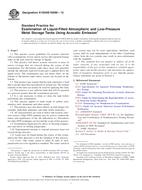
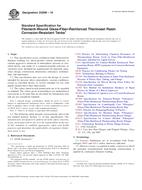 ASTM D3299-10
ASTM D3299-10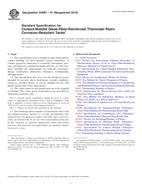 ASTM D4097-01(2010)..
ASTM D4097-01(2010).. ASTM D7831-13
ASTM D7831-13 ASTM E1067/E1067M-11..
ASTM E1067/E1067M-11..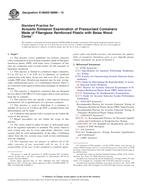 ASTM E1888/E1888M-12..
ASTM E1888/E1888M-12..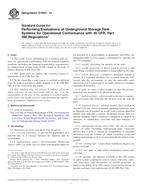 ASTM E1990-14
ASTM E1990-14
 Cookies
Cookies
